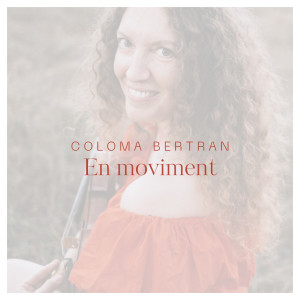 Barcelona based composer and violinist Coloma Bertran released this EP of experimental dance tunes late in 2024. It’s a beguiling short album that leaves the listener wanting more.
Barcelona based composer and violinist Coloma Bertran released this EP of experimental dance tunes late in 2024. It’s a beguiling short album that leaves the listener wanting more.
Playing entirely by herself with rhythms supplied in part by two guest dancers, Bertran explores Spanish folk and roots dance forms including rumba, jota, sardana, as well as a waltz and one short Celtic style piece. It opens with the latter, a tune that sounds to me like a slip jig, “Aromes de Contrapàs,” which means something like “competing fragrances.” Using double tracking, she plays contrapuntal lines that swap leads seamlessly. “Rumba de la Funàmbula (rope walk) has a very Iberian feel to the melody and rhythm, a strong flamenco flavor enhanced by the soaring wordless vocals and multiple violin tracks playing various tunes and rhythmic chops.
The music leans into Bertran’s experimental side as the tracks progress. “Ball Pla Obstinat” is a standard but lovely little waltz, introduced by the sound of a radio dial spinning through static and successive stations, with a delightful section of triple tracked improvisation. “Jota de Veremar del Regne Animal” (harvest jota of the animal kingdom) finds her playing a lively jota tune (a colorful courtship dance like the fandango) over a set of dissonant drones and synthesized or looped squeals and rhythmic pulses, with perhaps a few wildlife field recordings as well. And it wraps on “Improvisació Sobre la Sardana de l’Elionor (improvisation for Elionor’s sardana, a traditional mixed-sex circle dance) which has a kind of playfully formal sound.
En Moviment does a beautiful job of blending traditional forms with modern interpretation and technique. Plus Coloma Bertran is just an excellent composer and fiddler. Though these tunes grew out of her research into Spain’s traditional dances and roots music, the resulting music is anything but academic. Joyful, lively and entertaining.
x is the name under which Carme López — a researcher, teacher and  performer of traditional Galician vocal music — has recorded her first album Vinde Todas. To describe the album itself makes it seem like solely an academic project. It has 10 tracks, eight songs bookended by two field recordings of interviews. Each of the tracks includes the name or names of women from whom Carmela learned the song.
performer of traditional Galician vocal music — has recorded her first album Vinde Todas. To describe the album itself makes it seem like solely an academic project. It has 10 tracks, eight songs bookended by two field recordings of interviews. Each of the tracks includes the name or names of women from whom Carmela learned the song.
The performances, however, make this more than an ethnographic study, as Carmela brings the songs, most or all of which are associated with traditional dances, alive with a combination of respect for tradition and modern techniques and interpretations.
Carmela sings with a clear, strong and unaffected voice that’s suited to the material. The most striking to me is “A miña vai acabada,” which she sings unaccompanied but for a variety of continuous field recordings that evoke a village or small town, including barking dogs, baa-ing sheep, and a police or ambulance siren traveling through the sonic frame. Elsewhere she is accompanied by synthesized but naturalistic rhythms: what sounds like a marimba on the beguiling “No alto do cacho” (At the top of the pile), and a martial drumbeat on “Fumaces” a cryptic folk song about the young men of the village of Fumaces; to add a somewhat anachronistic touch, she electronically modulates her voice in various ways on the final syllable of each line.
“A dibujarte” also is heavy on synthesized percussion including rattles and handclaps, and that rhythmic base plus Carmela’s nasal vocal style give the song a very old feel, which is belied by the nearly excplicit lyrics of love and lust. “O ramo” features a similar folksy singing style by Carmela, and on this one she’s joined by vocals and percussion from the village women’s ensemble Pandereteiras de Toutón.
And so it goes on this short album that’s full of contrast and surprises. It’s a welcome look at some of the other musical traditions of a region of Spain best known abroad for its Celtic style bagpipe music.
(Microscopi, 2024)
